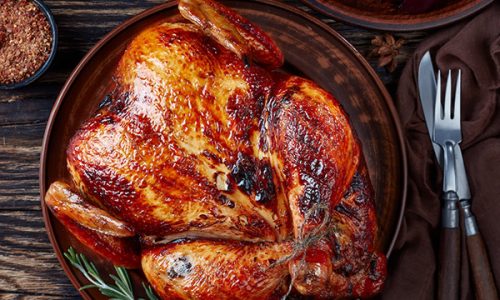Safe and Nutritious Thanksgiving Meals
go.ncsu.edu/readext?967628
en Español / em Português
El inglés es el idioma de control de esta página. En la medida en que haya algún conflicto entre la traducción al inglés y la traducción, el inglés prevalece.
Al hacer clic en el enlace de traducción se activa un servicio de traducción gratuito para convertir la página al español. Al igual que con cualquier traducción por Internet, la conversión no es sensible al contexto y puede que no traduzca el texto en su significado original. NC State Extension no garantiza la exactitud del texto traducido. Por favor, tenga en cuenta que algunas aplicaciones y/o servicios pueden no funcionar como se espera cuando se traducen.
Português
Inglês é o idioma de controle desta página. Na medida que haja algum conflito entre o texto original em Inglês e a tradução, o Inglês prevalece.
Ao clicar no link de tradução, um serviço gratuito de tradução será ativado para converter a página para o Português. Como em qualquer tradução pela internet, a conversão não é sensivel ao contexto e pode não ocorrer a tradução para o significado orginal. O serviço de Extensão da Carolina do Norte (NC State Extension) não garante a exatidão do texto traduzido. Por favor, observe que algumas funções ou serviços podem não funcionar como esperado após a tradução.
English
English is the controlling language of this page. To the extent there is any conflict between the English text and the translation, English controls.
Clicking on the translation link activates a free translation service to convert the page to Spanish. As with any Internet translation, the conversion is not context-sensitive and may not translate the text to its original meaning. NC State Extension does not guarantee the accuracy of the translated text. Please note that some applications and/or services may not function as expected when translated.
Collapse ▲With November here and Thanksgiving coming soon, many of you have or are shopping for a turkey or ham, and we all want confidence that meats for our holiday meals are safe, healthy and wholesome. These days, there are so many choices, labels, and marketing tactics across the food industry that it can be overwhelming.
So, what about antibiotics? Is the turkey we prepare for our meals antibiotic-free? This is often a concern of consumers and rightly so. Everyone wants to rest assured the food on our table is safe and healthy for our family. The answer is yes! It is against the law to sell meat containing antibiotics. All meat sold in the United States has been inspected to be safe from antibiotics. That said, I thought it would be a good time to share the many food safety precautions and mandatory steps that are taken all along the way to ensure this safe, antibiotic free food supply – from the farm to our tables.
The United States Department of Agriculture has two agencies that work together, along with farmers and processing plants to ensure this safety in food animals. These are the Animal and Plant Health Inspection Service (APHIS) and the Food Safety and Inspection Service (FSIS). Turkeys are raised for four to five months in climate-controlled barns, safe from adverse weather and predators, and are approximately 6 months old when harvested. While growing, they roam around the barn and are fed a carefully balanced ration to meet their nutritional needs, mostly of corn and soybean meal, with added vitamins and minerals. Nutritionists adjust the diet as the turkeys grow and develops.
While on the farm, their health is monitored by the grower with the advisement of their veterinarian. Antibiotics may be administered as the turkeys grow and develop, always under direction of the veterinarian, to prevent disease and increase feed efficiency. If so, a “withdrawal” period is required to ensure the birds are free from any antibiotic residues prior to slaughter. Extensive recordkeeping and management takes place to ensure that any antibiotic medications are removed from the feed or water source well before the turkeys reach the desired weight and transported to the processing plant for harvest. The FSIS veterinarians inspect live birds upon arrival to the plant, checking for sickness and injury, and randomly sample the birds to test for any antibiotic residues. Any birds in question are pulled off the processing line for closer inspection. Additional inspection and testing is done to check for foodborne hazards, such as E. coli and Salmonella. Processed birds are washed and kept chilled to prevent the growth of harmful bacteria. All processing plants are required to have and follow Sanitary Standard Operating Procedures and a Hazard Analysis and Critical Control Point (HACCP) plan to ensure the turkeys are protected from any dangerous chemicals, materials, or food safety risks.
While this article focuses mainly on turkeys, these same precautions and inspections are taken for all US raised meat products. If you are serving ham or roast beef at your Thanksgiving meal, relax and rest assured that the pork and beef you eat has been safely grown, processed, inspected and packaged in the same manner.
For more information on food safety with meat, poultry, or egg products, USDA has a meat and poultry hotline: 1-888-MPHotline. You can visit the FSIS Website. To learn more about our American Turkey Farmers and cooking tips for turkey, visit the National Turkey Federation




